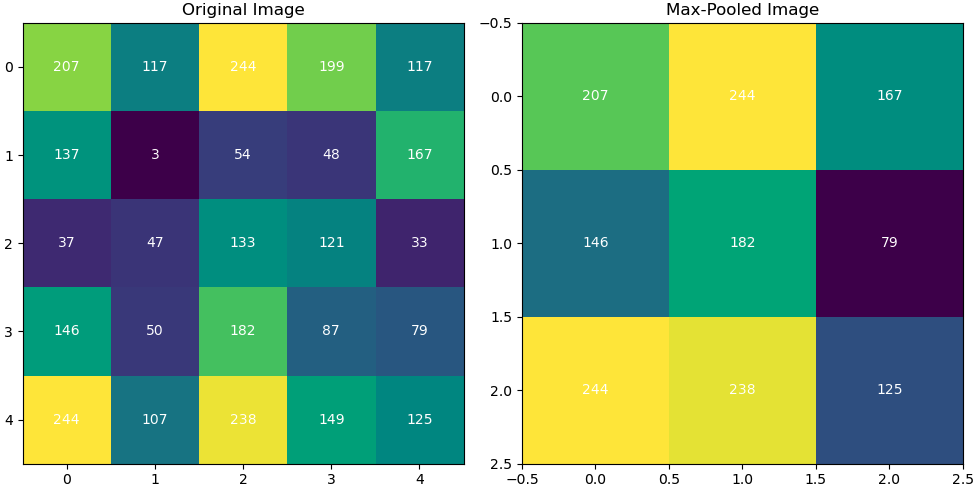|
||||||||
Max-Pooling - Python Automation and Machine Learning for ICs - - An Online Book - |
||||||||
| Python Automation and Machine Learning for ICs http://www.globalsino.com/ICs/ | ||||||||
| Chapter/Index: Introduction | A | B | C | D | E | F | G | H | I | J | K | L | M | N | O | P | Q | R | S | T | U | V | W | X | Y | Z | Appendix | ||||||||
================================================================================= In CNNs, convolution and pooling are two fundamental operations that are often used together to process and analyze input data, typically images. They are sequential operations within a CNN layer. Max-pooling is a type of pooling operation commonly used in machine learning and convolutional neural networks (CNNs). It involves dividing the input data into non-overlapping regions and selecting the maximum value from each region to create a downsampled version of the input. Here's how max-pooling works:
Figure 3545a shows a max-pooling with a pool size of 2 x 2.
Figure 3545a. Max-pooling with a pool size of 2 x 2 (code). Max-pooling is used for several reasons in convolutional neural networks:
============================================
|
||||||||
| ================================================================================= | ||||||||
|
|
||||||||

